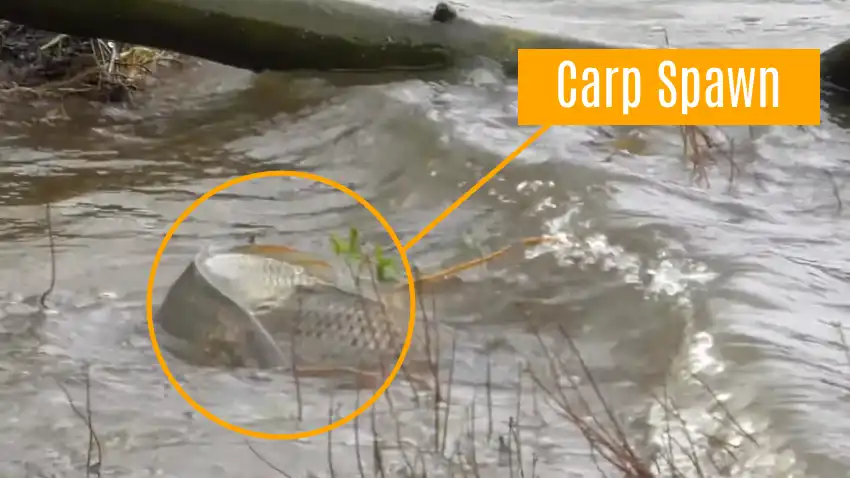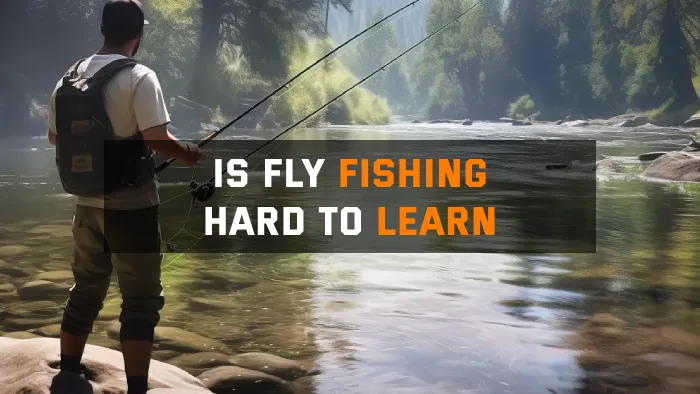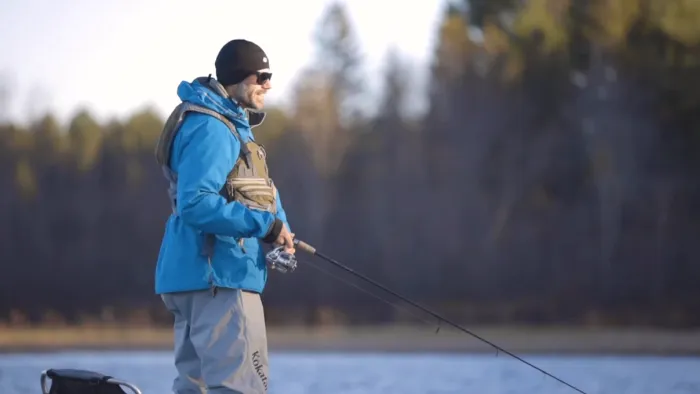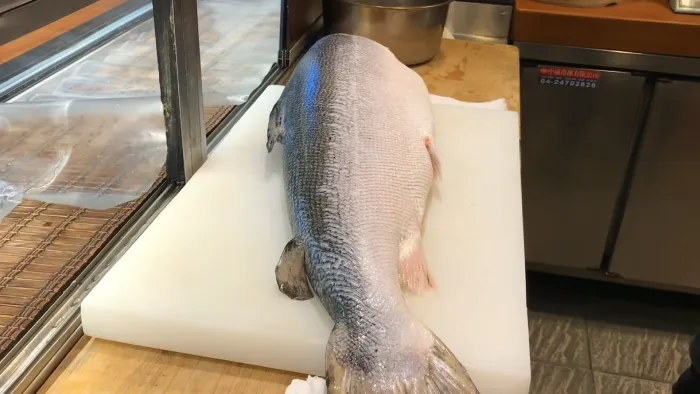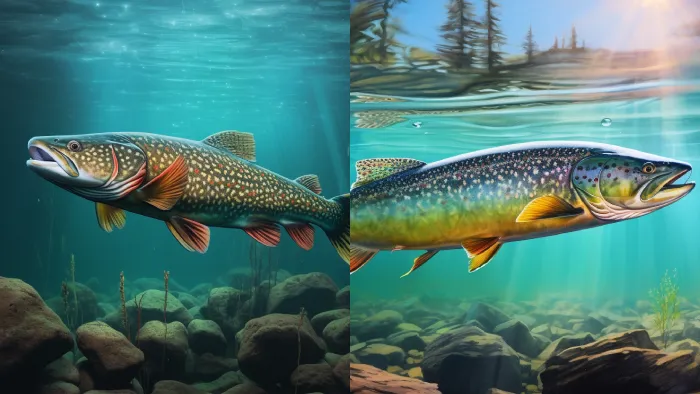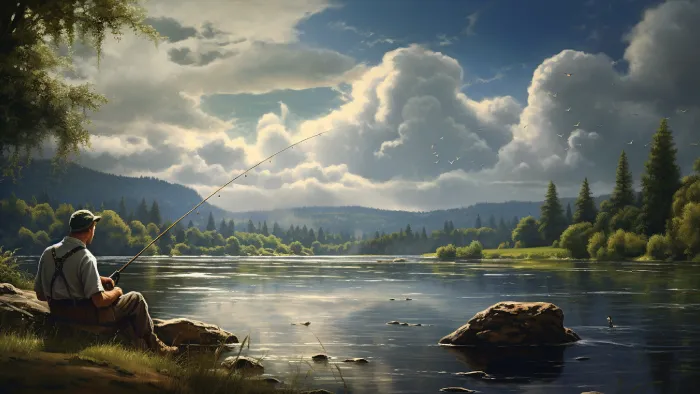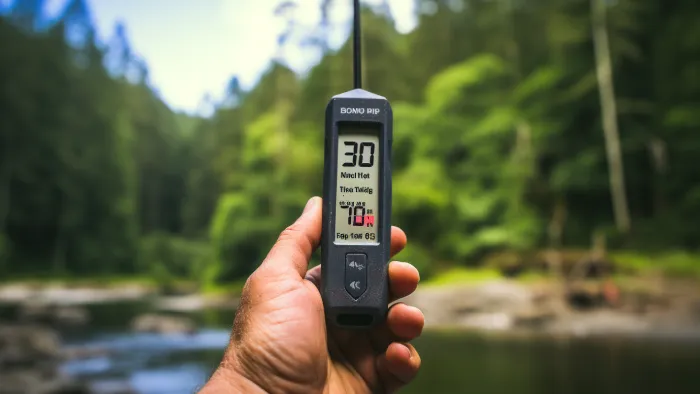What Water Temp Do Carp Spawn: 4 Tips for Fishing
Carp fishing is a beloved pastime for many anglers around the world. One of the key factors that significantly impacts the success of carp fishing is water temperature.
In general, carp spawn when the water temperature reaches a certain range, generally between 18°C (64°F) and 24°C (75°F). The exact temperature range for carp spawning can vary depending on local conditions, but this is a common range in many regions.
Here, we’ll explore the nuances of carp fishing about water temperature, from the depths of winter to the peak of summer. We’ll also dive into the intriguing behaviors of carp during their spawning season and reveal the best times of day to engage with these elusive fish.
What Are the Common Carp Water Temperature Preferences for Fishing?
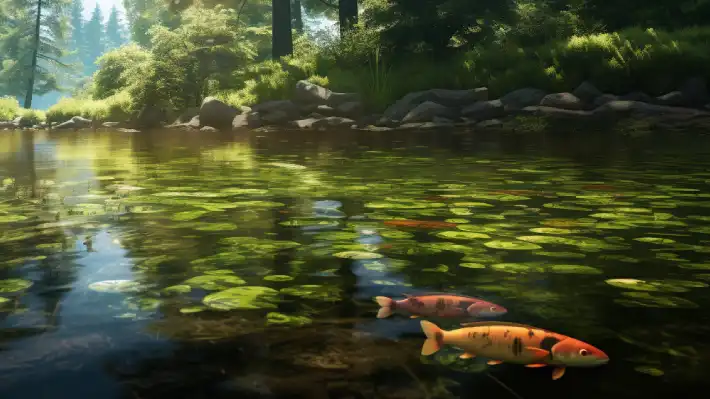
For common carp fishing, understanding their water temperature preferences is crucial.
- Cold Water Carp Fishing (Below 50°F or 10°C)
- Cool Water Carp Fishing (50-64°F or 10-18°C)
- Warm Water Carp Fishing (64-75.2°F or 18-24°C)
- Hot Water Carp Fishing (Above 75.2°F or 24°C)
1. Cold Water Carp Fishing (Below 50°F or 10°C)
To increase your chances of catching carp in cold water below 50°F or 10°C, it’s important to understand their common water temperature preferences for fishing. In colder water, carp become less active and their metabolism slows down. As a result, you’ll need to adjust your fishing techniques accordingly.
Use smaller baits and present them slowly to entice the carp. High-visibility baits, such as bright pop-ups, can help attract their attention in the cold water. Look for areas where the water may be slightly warmer, such as sunny shallows or spots near underwater structures.
2. Cool Water Carp Fishing (50-64°F or 10-18°C)
When fishing in cool water, carp become more active, increasing your chances of catching them. In the temperature range of 50-64°F or 10-18°C, carp tend to be more responsive to a wider range of baits. Boilies, corn, and pellets are all effective options during this time.
Consider fishing in mid-depth areas where carp often hang out when fishing in cool water. Use a slow-sinking bait presentation and closely monitor your rod tip for any subtle movements.
Carp in cool water may take the bait cautiously, so patience is key. Additionally, prebaiting the area can help attract carp to your spot and increase your chances of success.
3. Warm Water Carp Fishing (64-75.2°F or 18-24°C)
During warm water temperatures, carp prefer certain conditions for optimal fishing success. Carps are most active during this temperature range, feeding actively and often venturing into shallower waters.
Surface fishing using floating baits like bread or dog biscuits is highly effective during this time. Corn, boilies, and other high-protein baits also work well.
Stalking carp in the shallows can be a successful tactic, as they’re easily spotted in these areas. It’s important to ensure that your gear is well-maintained and ready for strong runs, as carp are more energetic during warm water temperatures.
4. Hot Water Carp Fishing (Above 75.2°F or 24°C)
Maximize your fishing success in hot water by understanding the common carp’s water temperature preferences. When the water temperature rises above 75.2°F or 24°C, carp become less active due to reduced oxygen levels. This can make fishing for carp in hot temperatures challenging.
It’s important to note that waters above 86°F (30°C) should be avoided as carp may become stressed. If you must fish in hot weather, consider fishing during the early morning or late evening when the water is cooler. Additionally, using short, sharp fishing sessions and keeping a close eye on carp behavior is recommended.
Choosing baits with strong scents or flavors can also help attract carp when their appetite is diminished.
Following these tips can increase your chances of success when fishing for carp in hot water conditions.
How Does Water Temperature Affect Carp Fishing Anglers?
Choosing the right water temperature for carp fishing is crucial to a successful angling experience. Here are a few things to keep in mind when selecting a temperature for carp fishing:
1. Spring Carp Fishing
- Focus on fishing in areas where the water warms up quickly. This will increase the activity level of the carp as the water temperatures rise. Shallow bays and sun-exposed shorelines are great locations to find warmer water.
- Target carp using slow-sinking or pop-up baits within their feeding zone. Slow-sinking baits will help you keep your presentations within the carp’s feeding zone, increasing your chances of success. Pop-up baits can also effectively catch carp’s attention in the clearer spring water.
- Consider using a zig rig, as carp often feed at various depths during this period. This rig will allow you to present your bait at different levels in the water column, increasing your chances of attracting carp.
2. Summer Carp Fishing
During summer, anglers can optimize their carp fishing experience by understanding how water temperature affects their success. As water temperatures peak, carp become more active and aggressive in feeding.
To capitalize on this, focus your fishing efforts during the early morning and late evening hours when the water is cooler.
Carp tend to retreat to deeper areas during the day’s heat, so target these spots for better chances of success. In terms of bait, opt for natural options like sweetcorn, maize, and boilies, as they’re highly effective in warm water.
Additionally, consider surface fishing with floating baits, as carp may be more inclined to visit the surface during summer.
To prevent spoilage, keep your tackle and bait cool, and use a marker float to locate underwater features and find the best feeding spots.
3. Fall Carp Fishing
As an angler targeting fall carp, you need to be aware of how water temperature affects your fishing success. In the fall, as the water cools down, carp become more active and start feeding voraciously to store energy for the winter.
To optimize your fishing experience, focus on fishing in shallower waters with a soft bottom. These areas tend to warm up faster and attract carp looking for food.
It’s crucial to use a variety of baits to cater to the changing dietary preferences of the carp. Consider using pellets, particles, and boilies, and experiment with different flavors and spices to entice the carp.
4. Winter Carp Fishing
As you continue targeting carp during the winter months, it’s important to understand how water temperature directly impacts your success as an angler.
In cold water, carp become less active and feed sparingly, making bites more rare. However, you can still employ strategies to increase your chances of catching carp during this time.
Fish during the warmest part of the day, usually in the afternoon when the water temperature is slightly higher. Opt for small, highly digestible baits like maggots and bread, as carp cannot process larger, indigestible food items.
Using bite alarms and visual indicators to detect subtle bites is also helpful. Patience and attention to detail are key, as carp often feed close to their winter haunts.
What time of day are carp most active?
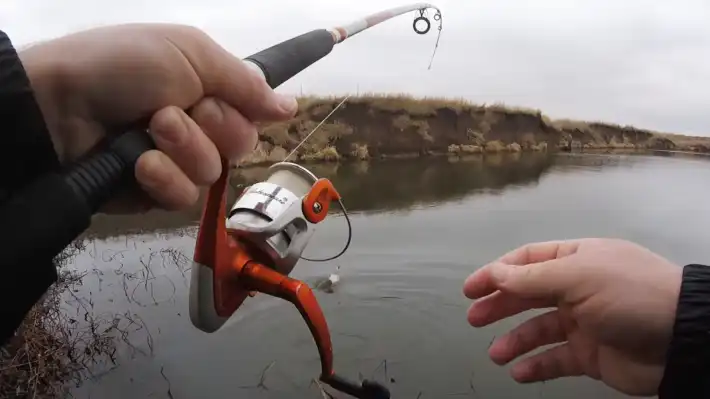
Carp are most active in the early morning and late evening when the water is cooler. During these times, the water temperature is more favorable for carp activity, as they’re cold-blooded creatures that thrive in lower temperatures.
In the morning, carp become more active as they emerge from their resting areas and search for food. As the day progresses and the sun rises, the water temperature increases, causing carp to become less active. They often seek refuge in deeper, cooler water to escape the heat.
In the late evening, as the temperature cools down again, carp become more active, feeding and exploring their surroundings. Therefore, if you want to maximize your chances of fishing carp in Hampshire, planning your fishing trips during these prime times of the day is advisable.
Do carp eat while spawning?
During the spawning process, carp don’t feed. As they prepare to spawn, their primary focus is finding a suitable mate and reproducing rather than searching for food. This behavior is common among many fish species, including carp.
Once the spawn is over, carp may exhibit a period of inactivity and exhaustion, during which they’re unlikely to eat. This post-spawn period is crucial for the fish to recover and regain energy. Anglers need to be aware of this behavior and adjust their fishing strategies accordingly.
After the post-spawn period, carp will gradually resume their feeding habits and become more active. Therefore, it’s best to target carp for feeding opportunities before and after spawning.
Do carp bite in cold water?
When the water temperature drops, carp’s metabolism slows, but they still need food to survive. In cold water, carp tend to be less active and move slower, but they’ll still take the bait if presented correctly.
Remember that their feeding patterns might change in colder temperatures, so adjust your fishing tactics accordingly. Use smaller baits and slow down your retrieve speed to entice carp to bite.
Additionally, fishing near areas with underwater structures or warmer pockets of water can increase your chances of success.
Mastering Water Temperature Preferences for The Ultimate Carp Fishing
As you can see, understanding the water temperature preferences of carp is crucial for successful fishing. Carp fish are most active in water temperatures between 60 and 75 degrees Fahrenheit, with spawning occurring between 68 and 72 degrees Fahrenheit.
As water temperature affects their metabolism and feeding patterns, anglers should adjust their fishing techniques accordingly.
Additionally, while carp may still bite in cold water, they’re generally less active and more difficult to catch. Don’t forget, ‘Patience is a virtue’ when it comes to carp fishing in varying water temperatures.

